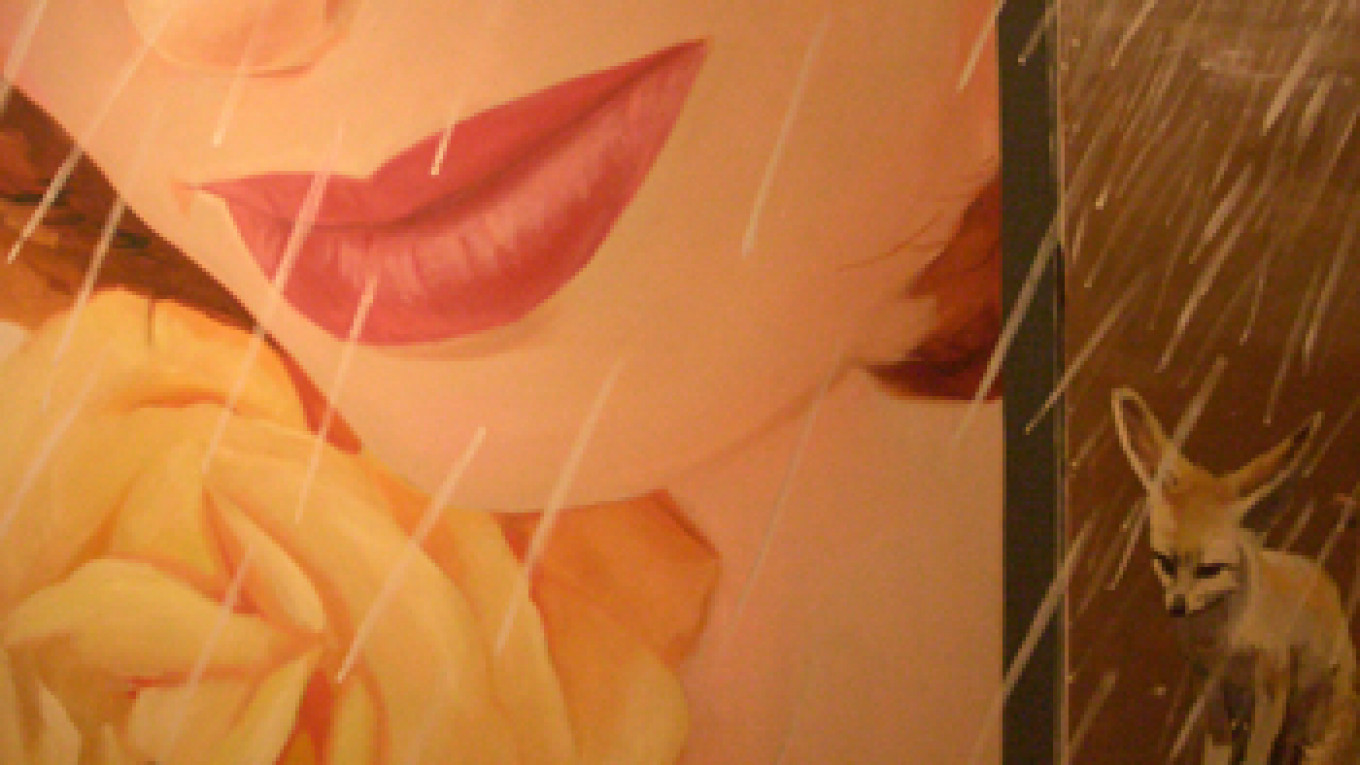The exhibition, celebrating the tenth birthday of the museum and curated by Anna Arutyunyan, divides MMOMA's second floor into 14 sections, each dedicated to a theme from the history of modern art. In this way it aims to serve as a literal walk-through from the early 19th century, when artworks were all but exclusively used to imitate nature, to the contemporary era, where artists wantonly play with the notion of what art can be and what can be art.
"The idea was to connect the academic canon with modern and contemporary art of the 20th and 21st centuries," explained Arutyunyan.
Visitors begin with neoclassical works in the "canon," then move on through artists' variations on depicting nature, such as still-lifes, portraitures, and landscapes from the best-known Russian artists of the 20th century and new and upcoming ones. "In general, many regular viewers often struggle to understand" the artworks, Arutyunyan said. "This is a certain kind of overview that may well help them."
A chronological guide to the development of modern art in the manner of the Tate Modern's permanent collection, however, this is not. Instead, Arutyunyan has opted for a wholly conceptual approach that is more intellectually complicated and confusing than much of the Moscow Conceptualist School of Art itself. Artists separated by decades or even a full century with little in common either stylistically or by way of artistic genealogy are all too often found next to each other.
This is apparent the moment the viewer leaves the "canon" and finds a pre-Modern still life alongside a mixed-media piece from Soviet-era nonconformist Oscar Rabin's post-exile years in Paris. In the last room, called "Language Exercises," there is an obscure and tiny Kandinsky, one of perestroika hero Timur Novikov's cheap glamour "rags" with a picture of an Apollo statue on it and a massive text painting by 29-year-old David Ter-Oganyan — producing an overintellectualized mishmash that leaves more of a lasting impression than the concept itself.
The problem lies less with the artists themselves — most major figures in Russian modern art from Malevich to AES+F are included — than with the obvious issue of trying to present a complete overview of such a broad topic with MMOMA's means. Like any state-funded contemporary institution, it lacks the funds to compete for the best works on the market and often relies on commercial galleries for personal exhibitions, making a survey of the Tate Modern's caliber out of the question.
There is, then, no point in blaming MMOMA for having such a mixed collection. In any case, the chance to see lesser-known works by artists long familiar to the experienced viewer is always a welcome one. But while infinitely preferable to the "can't curate, won't curate" attitude shown at the Kandinsky Prize exhibition, at times Arutyunyan's selection can let both the novice and the professional down equally.
"The formal and superficial approach to the works turns out a 'reductio ad absurdum,'" commented Artchronika critic Yelena Fedotova. "It also champions maximum fulfillment of the museum space — which has so much art in it that the exhibition reminds you more of a cemetery." Certainly, there's more than enough good art here to potentially have made this an interesting "B-sides" complement to the greatest-hits "Russia!" exhibition at New York's Guggenheim in 2005. But as for answering the question of what modern Russian art is and where it is going, the curatorial style only muddles the substance.
"From Study to Art Object" is on at the Museum of Modern Art until March 10. 25 Ulitsa Petrovka. Metro Chekhov-skaya. Tel. 694-2890.
A Message from The Moscow Times:
Dear readers,
We are facing unprecedented challenges. Russia's Prosecutor General's Office has designated The Moscow Times as an "undesirable" organization, criminalizing our work and putting our staff at risk of prosecution. This follows our earlier unjust labeling as a "foreign agent."
These actions are direct attempts to silence independent journalism in Russia. The authorities claim our work "discredits the decisions of the Russian leadership." We see things differently: we strive to provide accurate, unbiased reporting on Russia.
We, the journalists of The Moscow Times, refuse to be silenced. But to continue our work, we need your help.
Your support, no matter how small, makes a world of difference. If you can, please support us monthly starting from just $2. It's quick to set up, and every contribution makes a significant impact.
By supporting The Moscow Times, you're defending open, independent journalism in the face of repression. Thank you for standing with us.
Remind me later.


